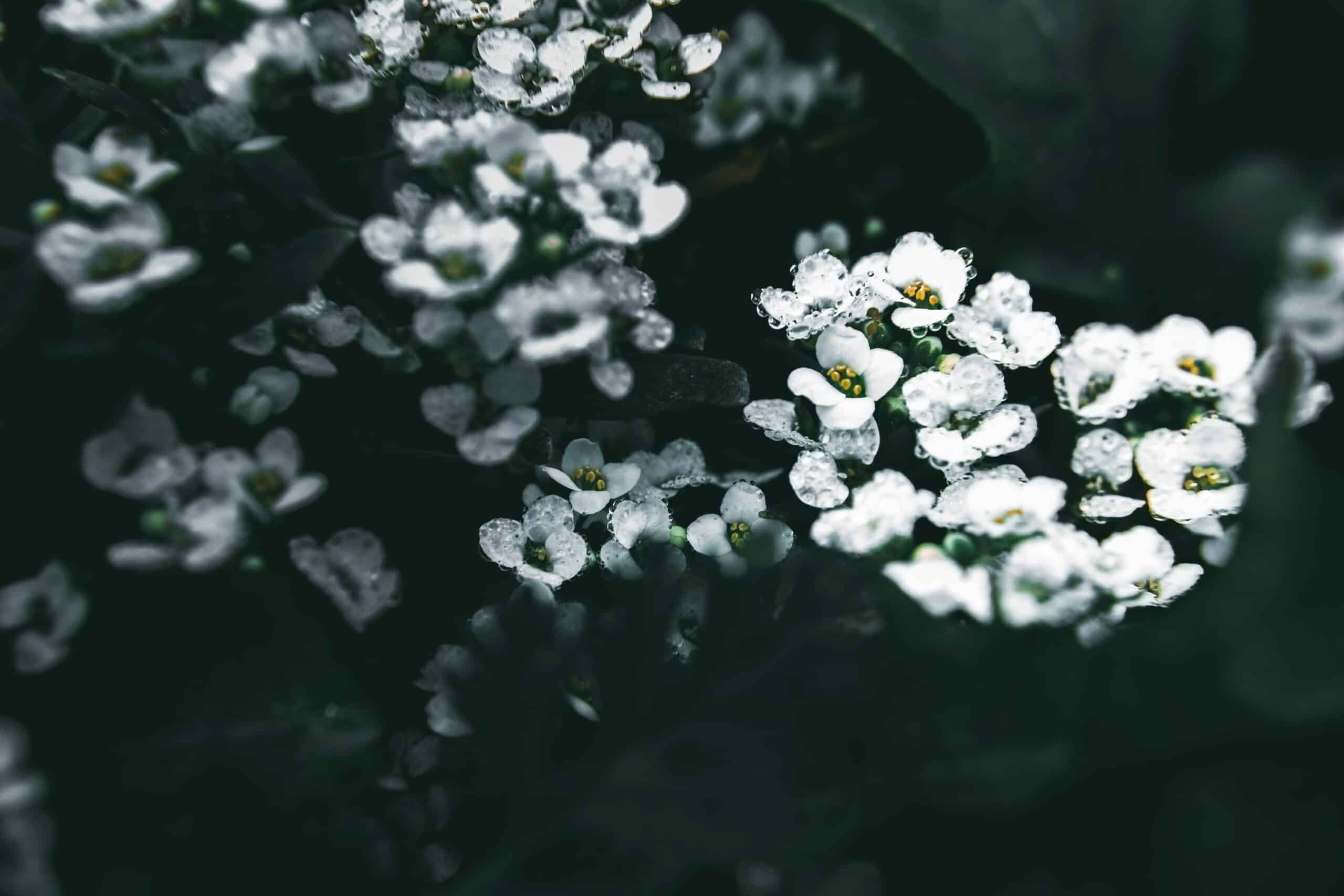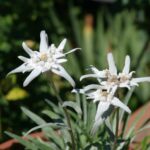Do you want to bring a splash of color and fragrance to your garden this season? Sweet Alyssum is the perfect solution! This easy-to-care-for flower thrives in sunny or partially shaded areas and blooms with delicate white, pink, purple, or yellow flowers. In this article, we’ll discuss how to grow and care for Sweet Alyssum so that it can bring beauty and aroma to your outdoor space all year long.
Sweet Alyssum is one of the most popular annuals because of its low maintenance requirements and long bloom time. Not only does it attract pollinators like butterflies and bees, but its sweet scent will fill your garden with a pleasant aroma during the summer months. Plus, Sweet Alyssum has a plethora of medicinal uses as well as being an excellent edible flower.
With just a few simple steps, you can enjoy vibrant blooms throughout the entire growing season. Read on to learn more about how to grow and care for Sweet Alyssum in your own garden!
What Is Sweet Alyssum?
Sweet alyssum is a delicate, beautiful flower that can bring life to any garden. Its small blooms of white and purple are like stars in the night sky, creating an inviting atmosphere. Not only does it have a beautiful aesthetic appeal, but its fragrance will fill the air with an enchanting aroma. It’s no wonder why sweet alyssum has become such an essential part of gardens everywhere!
The best way to grow sweet alyssum is by direct sowing in a sunny area of your garden. Plant seeds about ¼ inch deep and 12 inches apart from one another. Make sure the soil is kept moist and keep weeds away from the plants. Feed your sweet alyssums regularly with balanced fertilizer to encourage strong growth and beautiful blooms throughout the season.
With proper care, sweet alyssum will reward you with years of beauty and fragrant aroma in your garden. While it may require some extra attention at first, this hardy flower is well worth the effort for its gorgeous display of tiny petals! Taking care of sweet alyssum is simple and rewarding; all you need to do is give these little stars some love and they’ll be there for you time after time.
Where To Plant Sweet Alyssum
Planting sweet alyssum is the first step in growing and caring for these fragrant flowers. It’s an easy task that can bring joy to any garden, balcony or front yard. And with a little bit of effort and love, you can create a beautiful flower bed that will last for months.
When choosing where to plant your sweet alyssum, look for an area that gets plenty of sun. These plants thrive when they get six hours of sunlight each day – morning sun is best – so don’t be afraid to try different locations if one doesn’t work out. Make sure the area is well drained too; otherwise, the soil will stay wet for too long and cause root rot.
Once you’ve selected the right spot, it’s time to start planting! Sweet alyssum should be planted around 6 inches apart from each other and in wide rows – this gives them plenty of space to grow and spread out. Planting in late spring or early summer is ideal, as this gives them enough time to bloom before winter arrives.
With the right conditions and care, your sweet alyssum plants will provide you with beautiful blooms all season long. To ensure they thrive in your garden, next we’ll discuss what kind of sunlight requirements they need.
Sunlight Requirements For Sweet Alyssum
Sweet alyssum is an incredibly resilient and easy to grow flower that can bring vibrant color to any outdoor space. Interestingly, it’s been found that sweet alyssum can even survive in partial shade, which is an ideal planting location for many gardeners. Now let’s dive into the sunlight requirements for growing sweet alyssum.
When it comes to sunlight requirements, sweet alyssum prefers full sun but will also tolerate some light shade depending on the season. In fact, if planted in full sun during the summer months, they may need to be protected from extreme heat or direct exposure. That being said, morning sun or dappled afternoon sunlight are the best options for optimum growth and blooms throughout the season.
It’s important to note that sweet alyssum can become leggy with too little sun exposure and won’t bloom as profusely as plants receiving more hours of sunshine each day. To get the most out of this vibrant flower, you’ll want to make sure your plants are getting six hours of sunlight every day – especially during the hottest times of year. With proper care and attention, you should have beautiful blooms all season long!
Now that we’ve discussed how much sunlight your sweet alyssum needs, let’s move on to soil requirements for successful growth.
Soil Requirements For Sweet Alyssum
Soil is an important factor in the successful growth of sweet alyssum. It needs to be well-draining, nutrient-rich and slightly acidic for optimal growth. Understanding the soil requirements for sweet alyssum will ensure you have beautiful plants that will thrive in your garden. Here are three key points to keep in mind:
Sweet alyssum prefers loamy soils with plenty of organic matter mixed in. This will help ensure the soil has enough nutrients to sustain its growth throughout the season.
The pH level should be around 6.5 to 7.5, as it needs slightly acidic soil to grow healthily and bloom abundantly. You can test your soil with a DIY kit or send it off to a lab for testing if needed.
In addition, sweet alyssum does not like overly wet soil, so make sure you provide good drainage by adding sand or gravel to prevent waterlogged conditions which can lead to root rot and other problems with your plants health.
Now that you know what kind of soil sweet alyssum needs, it’s time to look at planting this beautiful flower in your garden!
Planting Sweet Alyssum
Planting sweet alyssum is easy and can be done in many different ways. When planting from seed, you can place the seeds directly into your garden bed or container. Just sprinkle the seeds over the surface of the soil and lightly press them down or cover with a thin layer of soil. You can also start your seeds indoors about four to six weeks before your last frost date. Once the seedlings have reached about two inches tall, they are ready for transplanting outdoors.
For those looking for instant gratification, plants are available at most nurseries or online. If you’re buying from a nursery, check out their selection and pick plants that look healthy and vibrant. For potted plants, make sure that there is room in the pot for water drainage and also check if it’s been fertilized recently.
When transferring to an outdoor space, make sure you give them enough room to spread out as they grow and provide plenty of sunlight. Water regularly so that the soil doesn’t dry out completely but avoid overwatering as this may cause root rot.
TIP: As sweet alyssum is susceptible to certain diseases like powdery mildew, make sure to keep an eye on any signs of disease such as discolored spots on leaves or stems and take action accordingly by removing affected areas or applying fungicide.
Water Requirements For Sweet Alyssum
When it comes to water requirements, sweet alyssum is absolutely unrivaled! Not only does it require little to no water at all, but the abundance of color and beauty that its flowers deliver make up for the lack of hydration. It’s hard to believe that such an incredibly stunning plant needs so little care! With just a few simple steps, anyone can have these gorgeous blossoms in their garden.
First of all, sweet alyssum doesn’t need much water at all. At most, you should only give it one inch of water every week or two. This means you don’t need to be constantly checking on the plants or worrying about how they’re growing – they can thrive with minimal effort from you.
That said, if there are periods of drought or intense heat, you may want to increase the amount of water your plants receive. But even then, the amount shouldn’t exceed more than two inches per week. Too much water can lead to root rot and other issues that could harm your sweet alyssum’s growth and health.
It’s important to note that even with limited watering, sweet alyssum will still thrive in your garden – as long as you give them some love and attention! By following these simple guidelines for watering requirements, you’ll be able to ensure that these beautiful blooms stay happy and healthy for years to come. Now let’s move on to fertilizing sweet alyssum for maximum growth potential!
Fertilizing Sweet Alyssum
Fertilizing sweet alyssum is an important step in helping it reach its full potential. A balanced, slow-release fertilizer should be applied in the early spring and again in mid-summer. It’s important to follow the instructions on the package for diluting and applying the fertilizer. Too much fertilizer can damage or even kill young plants, so take care when using it.
When growing sweet alyssum in containers, you may need to fertilize more often than if you were planting it directly into your garden soil. This is because the nutrients can quickly be used up by the plant in a container compared to those planted directly into soil. A balanced liquid fertilizer mixed with water should be applied monthly during warm weather when growing sweet alyssum in containers.
It’s essential to keep an eye out for nutrient deficiencies when fertilizing sweet alyssum, as this could lead to poor growth or stunting of the plant. Common signs of deficiency are pale or yellow leaves and stunted growth, so if you notice any of these symptoms make sure to adjust your fertilizing schedule accordingly. With proper care and attention, sweet alyssum will thrive and bring beauty to your garden!
Container Gardening With Sweet Alyssum
Container gardening is a great way to cultivate sweet alyssum and add some color to your outdoor space. It’s easy and efficient, allowing you to make the most of a small area. Plus, it provides an opportunity for creative expression with different pot shapes and sizes. Let’s explore how you can use container gardening to grow sweet alyssum:
First, choose a pot that suits the size of your space. Make sure it has drainage holes at the bottom so excess water can escape. Plant your sweet alyssum in potting soil or compost and water thoroughly until moisture is coming out of the drainage holes. Here are some tips on selecting the right pot:
• Size – Choose one that fits comfortably in the allotted space • Material – Opt for ceramic or terracotta pots as they’re good at draining water • Color – Vibrant colors will enhance the beauty of your garden
Next, create an environment that encourages healthy growth by positioning your container in a sunny spot and providing adequate ventilation. Sweet Alyssums thrive in well-aerated soil, so consider adding perlite or vermiculite to ensure airflow throughout their roots. Some other essential environmental factors are proper light exposure, temperature control and wind protection.
Finally, once your sweet Alyssums have been planted, monitor them closely for signs of stress or disease like wilting leaves or discoloration. If you notice any of these symptoms, take steps to address them immediately before they become more serious issues. With meticulous care and attention, you’ll be able to enjoy beautiful blooms all summer long!
Pruning Sweet Alyssum
When it comes to pruning sweet alyssum, some may think that it’s unnecessary or too difficult. However, regular pruning will help ensure that your sweet alyssum blooms fully and that the plants remain healthy. After all, when done correctly, pruning can help keep your plants looking their best.
To begin with, it’s important to understand the basics of pruning sweet alyssum. You should aim to trim away any dead or diseased branches and leaves as soon as you spot them. This will help prevent any disease from spreading to other parts of the plant. Additionally, make sure not to cut off more than one-third of the overall height of your sweet alyssum in one go – this can cause damage and stress on the plant.
It’s also important to note that while you should remove dead or diseased branches, it’s not always necessary to do so before every flowering season. Even if you don’t prune back your sweet alyssum before each bloom cycle, you’ll still want to pay attention for signs of disease or damage throughout its growth period. If you notice anything out of the ordinary on your plants, take action as soon as possible by trimming away affected areas.
By taking care when pruning and looking out for signs of damage or disease, you can ensure that your sweet alyssum remains healthy and blooms beautifully season after season – no matter how often you choose to prune it! Ready for the next step? Let’s take a look at common pests and diseases of sweet alyssum now…
Common Pests And Diseases Of Sweet Alyssum
Growing sweet alyssum is like painting a garden with beautiful, delicate white and purple hues. Common pests and diseases of sweet alyssum can be an unwelcome interruption to this picture-perfect landscape. To keep your sweet alyssum healthy, it’s important to understand the common issues it can face.
Common pests that attack sweet alyssum include aphids, whiteflies, thrips and spider mites. These tiny insects can be controlled with insecticidal soap or neem oil if they become too overwhelming. Fungal diseases such as powdery mildew and rust can also occur due to overwatering or poor air circulation. To prevent these diseases, it’s best to water in the morning so that the leaves have time to dry before nightfall and ensure adequate air circulation around plants by not overcrowding them in the garden.
It is possible for sweet alyssum to be attacked by some insect larvae, but this is rare unless the plant has been severely neglected or infested with another insect species first. As long as you keep up with regular maintenance on your sweet alyssum, you should not have any problems with pests or diseases. TIP: Make sure to check for signs of pests regularly and take steps immediately if any are found!
Tips For Growing Sweet Alyssum
Surprisingly, sweet alyssum is one of the easiest flowers to grow and care for. With the right tips, you can get these plants thriving in no time. To draw your readers in, let’s begin with an analogy: taking care of sweet alyssum is like tending to an infant – nurturing and protecting them carefully until they’re ready to bloom! Now, let’s explore some helpful tips for growing sweet alyssum.
First of all, it’s important to provide ample sunlight. Sweet alyssum prefers direct sun for at least four hours each day; however, if your climate is too hot, partial shade may be more beneficial. When planting in containers or gardens, make sure soil is well drained, as these plants don’t tolerate overly wet conditions. Also remember to water regularly but lightly – keeping the soil moist without over-saturating it.
Finally, fertilizing every two weeks helps keep your sweet alyssum healthy and looking its best. Choose a balanced fertilizer with an N-P-K ratio such as 10-10-10 or 20-20-20. Apply the solution according to package instructions and avoid getting the fertilizer on the foliage as much as possible. With these simple steps, you can have beautiful blossoms blooming in no time! For optimal results when harvesting sweet alyssum, read our next section for more advice.
Harvesting Sweet Alyssum
Harvesting sweet alyssum is like unlocking a hidden treasure. Every gardener’s goal is to have the opportunity to reap the rewards of their hard work and dedication, and harvesting sweet alyssum brings that dream to life. Even though it can feel intimidating, with these steps you’ll be well on your way to taking home your bounty.
When it comes time to harvest your sweet alyssum, the best thing to do is start snipping away at the flowers around the edges. Once you’ve cut off those outer blooms, gradually work your way inwards until you’ve collected all of the flowers you want for yourself or for gifting. To ensure that you get lots of growth throughout the season, make sure not to take more than one-third of each plant at once.
It’s important to pick the flowers when they are most vibrant, so check daily and snip as soon as possible. If you plan on using them for drying purposes, wait until they are in full bloom before harvesting them – this will give you beautiful displays that last longer than if you picked them earlier. With care and attention, reaping an abundance of sweet alyssum blooms is simple and satisfying! With your harvest complete, it’s time to explore other ways to use sweet alyssum in landscaping.
Using Sweet Alyssum In Landscaping
Sweet alyssum is an incredibly popular flowering plant, with over 150 varieties of the species available on the market. It’s not just its vibrant colors that have made it so beloved; its sweet fragrance and low-maintenance needs make it the perfect addition to any garden. But did you know that sweet alyssum can also be used in landscaping? Here’s how!
When thinking of using sweet alyssum in landscaping, the first thing to consider is placement. Its fragrant blooms will add beauty and charm to walkways, fences, and rock gardens. Planting in raised beds or large containers makes for an especially attractive display. And because sweet alyssum thrives in full sun or partial shade, it can be included almost anywhere!
Using sweet alyssum in landscaping doesn’t end there; it can also be combined with other plants to create beautiful combinations! Consider pairing it with lavender or rosemary for a delightful scented pathway, or combine it with other small flowering plants like verbena or petunias for an eye-catching border around your yard. With so many possibilities available at your fingertips, you’re sure to find something that will look amazing in your landscaping design.
No matter what combination you choose, adding sweet alyssum to your landscaping will create an inviting atmosphere that’ll draw attention from far away! With proper care – including regular watering and deadheading – this delightful flower will thrive season after season and bring natural beauty to your outdoor space.
How To Preserve Sweet Alyssum
Are you looking for a way to preserve your sweet alyssum? If so, you’ve come to the right place! We have the ultimate guide to keeping your alyssum blooming all season long. Read on to find out how.
We’ll start with making sure your alyssum is planted in the right spot with plenty of sun and well-drained soil. Once it’s established, water regularly and mulch around the plant to protect it from extreme temperatures and keep it from drying out. If necessary, add fertilizer every few weeks for optimal growth.
But there’s more than just watering and fertilizing that goes into preserving sweet alyssum – you’ll also want to deadhead spent blossoms as often as possible to encourage new growth. Pruning back overgrown plants regularly can help ensure that your alyssum continues blooming throughout the season, too. With these simple steps, you’ll be able to enjoy beautiful sweet alyssum for months on end!
Now that you know how to care for and preserve sweet alyssum, let’s look at what plants make good companions for them in the garden…
Companion Plants For Sweet Alyssum
When it comes to growing sweet alyssum, companion plants can play an important role. These plants help sweet alyssum grow healthier and stronger by providing additional nutrients, shade, and protection from pests. If you’re looking for the perfect companions for your sweet alyssum, here are some of the best options:
•Marigolds: Marigolds are great companion plants for sweet alyssum because they help repel harmful insects.
•Garlic: Garlic is another excellent companion plant for sweet alyssum as it helps keep away many different types of pests.
•Lettuce: Lettuce is great for providing additional shade and protection from the sun.
•Radishes: Radishes also help provide additional nutrients to the soil, helping your sweet alyssum thrive.
In addition to these companion plants, there are also other methods you can use to ensure that your sweet alyssum remains healthy and strong. Providing adequate sunlight and water are two of the most important things you can do to ensure success with this beautiful flower. Mulch or compost can also be used around the base of your plant to help retain moisture and nutrients in the soil. Finally, regular pruning will help keep your plant looking neat and tidy while encouraging new growth.
These simple steps combined with the right companion plants will help you create an optimal environment for growing beautiful sweet alyssum flowers in no time! With just a little bit of effort and knowledge, you’ll be able to enjoy this lovely plant all season long!
Frequently Asked Questions
How Long Does It Take For Sweet Alyssum To Bloom?
One can almost feel the anticipation of nature when growing sweet alyssum. The air is filled with the promise of something beautiful, as if a million delicate white flowers are waiting to burst out of each seed and adorn the garden.
But how long does it take before these petite blooms arrive? Well, usually it takes about 10 to 14 days for sweet alyssum to germinate. After that, you can expect your plants to begin flowering in just 4-6 weeks.
The key is to ensure your sweet alyssum gets plenty of sunlight and water. With the right care, this plant will become an explosion of fragrance and beauty in no time at all. So why not give it a try today? You won’t be disappointed!
Sweet alyssum may be small, but its potential for transforming any outdoor space or pot into a thing of beauty is immense. With just a little bit of care, you’ll have an abundance of blooms in no time – making it well worth the wait!
What Is The Best Time Of Year To Plant Sweet Alyssum?
It’s no secret that sweet alyssum is one of the most beautiful, fragrant flowers out there. But if you want your garden to look its best, you’ll need to know when the best time to plant these beauties is. Well, friends, I’m here to tell you: it’s now!
That’s right – springtime is the perfect season for planting sweet alyssum. The mild weather and increased moisture will help your plants reach their full potential. Plus, you can enjoy their lovely blooms all summer long!
But don’t be fooled – even though it’s easy to grow these plants, they still need regular care and attention. Be sure to water them regularly and keep an eye on them for any signs of pests or diseases. With a little bit of effort and TLC, your sweet alyssum will reward you with beautiful blooms in no time!
How Often Should Sweet Alyssum Be Watered?
Starting a garden is a labor of love, and with sweet alyssum, it’s no different. This delicate flower can bring beauty to your garden, but if you want to ensure its success, you need to know how often to water it. Here’s what you need to know about watering sweet alyssum.
Getting the hang of watering your sweet alyssum is like learning any new skill: once you get the ball rolling, the rest comes naturally. During the summer months, when temperatures are warm and days are long, your sweet alyssum will need more frequent waterings—around twice per week in most cases. When days become shorter and cooler during fall and winter, drop back on watering frequency—once every 7-10 days should do the trick.
It’s important not to overwater as this can cause root rot or other diseases that can damage or even kill off your plants. A good rule of thumb is to check the soil before watering; when it’s dry several inches down into the soil, it’s time for another drink! With these tips in mind, your sweet alyssum will be blooming in no time!
Are There Any Special Care Instructions For Growing Sweet Alyssum In Containers?
Growing sweet alyssum in containers can require a bit of extra TLC. But if you stick to the basics, you’ll be rewarded with these dainty and fragrant flowers. Let’s take a look at some of the special care instructions for growing sweet alyssum in containers.
The first step to success is providing your sweet alyssum with the right soil mix. A combination of two parts potting soil and one part compost or perlite will give your plants the drainage they need while still maintaining enough moisture and nutrients. In addition, make sure your containers have proper drainage holes, as standing water can easily kill your plants.
When it comes to watering, you should check the soil every day or two and water only when it begins to dry out. You don’t want to overwater, as this can lead to root rot. Finally, make sure your containers are placed in an area that receives at least six hours of sunlight each day; this will help ensure that your plants bloom properly.
Taking all these factors into account will help ensure that your sweet alyssum thrives in its container home. With the right mix of soil, watering schedule, and positioning in sunlight, you’ll soon be seeing beautiful blooms from these wonderful little flowers!
Is Sweet Alyssum Vulnerable To Any Particular Diseases?
Sweet alyssum is a delicate flower that adds beauty to any garden. It’s an easy-to-grow annual that blooms from late spring to fall, with fragrant white, pink, or purple flowers. But is it vulnerable to any particular diseases? Surprisingly, yes! According to the Royal Horticultural Society, sweet alyssum can be affected by powdery mildew and grey mould.
So what can you do to protect your sweet alyssum? Fortunately, there are several methods available. Make sure you water the plant at its base and not on its leaves in order to avoid creating a moist environment that encourages fungal growth. Additionally, make sure to space your plants out properly so they get adequate airflow and light. Prune away any infected foliage as soon as you notice it and dispose of it immediately.
Finally, applying an organic fungicide may help reduce the risk of disease developing in your sweet alyssum plants. However, these applications should only be used when necessary since they can be damaging to beneficial insects like bees and butterflies that rely on the nectar from sweet alyssum flowers for food. Taking all these steps will ensure that your sweet alyssum gets all the care it needs so you can enjoy its beautiful blooms for many years to come!
Conclusion
In conclusion, Sweet Alyssum is an easy to care for flower that can add a beautiful splash of color in your garden or home. With proper care, it will bloom from early spring to late fall. It does best when planted in the springtime and needs regular watering and fertilizing throughout the season. When growing in containers, make sure the soil is well-draining and use a fertilizer specifically designed for flowers. Although Sweet Alyssum is susceptible to certain diseases like powdery mildew, they can be easily managed with preventive measures and appropriate treatments.
The key to having a successful Sweet Alyssum garden is being “proactive rather than reactive” when it comes to caring for the plants. Taking precautionary steps such as keeping weeds away from the plants, avoiding over-watering, and providing adequate light can help ensure your Sweet Alyssum stay healthy and vibrant all season long.
It’s worth putting in the effort to care for Sweet Alyssum because you’ll be rewarded with stunning blooms that are sure to bring a smile to your face! So why not give this beautiful little flower a try today? You’ll be glad you did!





























